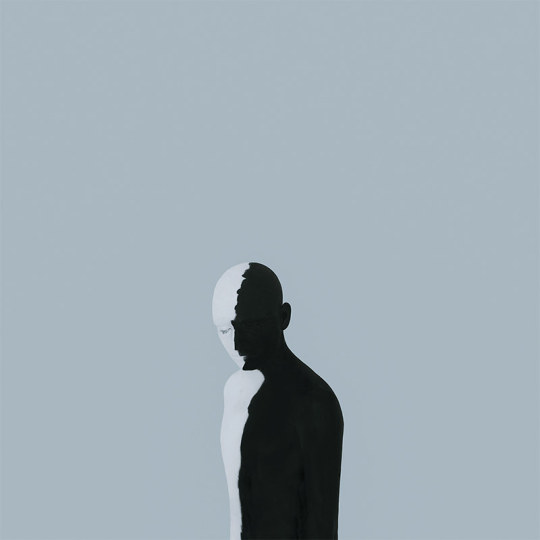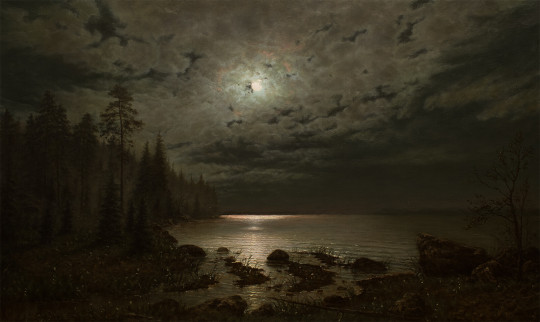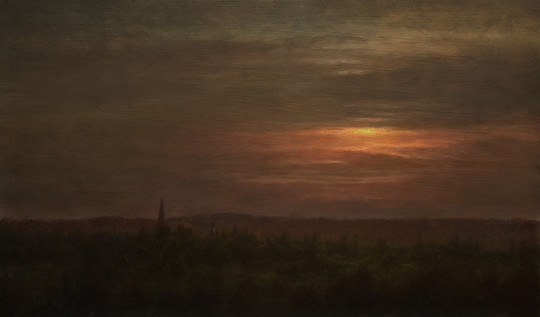Text
youtube
IN THIS WORLD - MONDO GROSSO
Now let's be in love
さあだから愛になりましょう
Embrace the dry world
乾いた世界を抱いて
read your wishes
希望を読み取って
From a frivolous screen
軽薄な画面より
Wet your skin intimately
親密に肌を濡らして
Warm up your freedom
自由を温めて
I just want to be happy
幸せでありたいだけの
Because they are strange creatures
微妙な生物達だから
Let your five senses dance
五感を踊らせて
From a frivolous scene
軽薄な場面より
Touch your dreams intimately
親密に夢を触って
Forgive me with those eyes
その目で許して
Now let's become the sea
さあだから海になりましょう
Crying for the dry world
乾いた世界を泣いて
swallowing despair
絶望を飲み込んで
Now let's be in love
さあだから愛になりましょう
Embrace the dry world
乾いた世界を抱いて
read your wishes
希望を読み取って
#art#philosophy#music#mondo grosso#hikari mitsushima#jpop#film#short#dance#magic#cinema#colors#life#love#reflection#sorrow#despair#hope#sincerity#vulnerability#truth#Youtube
0 notes
Text
Creed of the Starchild
Help me to understand the silence.
To find comfort in empty spaces forsaken.
Let me grow in wisdom and compassion.
To keep my heart open, and have eyes unclouded by hate.
Give me the strength to persevere through adversity.
To weather storms gracefully, and let them pass over me.
Allow me to continue to believe in the good.
In a world which is in desperate need of it.
When grief and sorrow come to visit,
Let me hold on to the hope-
That all of this pain will lead me somewhere,
and teach me something.
Forgive me for all of my mistakes,
Imbue me with the necessary humility to learn from them.
And if death is required to rid me of my conceits,
Grant me mercy to transcend myself- to be reborn and made new.
To live in alignment with my soul.
And tread a path that will make me whole.
Love is all I have.
Love is all I am.
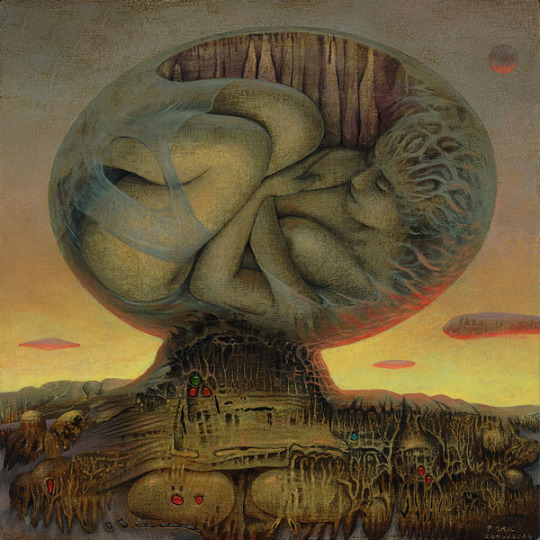
Awaiting the Rebirth by Peter Gric
#journal#text#monologue#philosophy#belief#faith#spirituality#reflection#introspection#art#creative#musings#love#life#journey#writing#psychology#existential#personal#creed#peter gric#Spotify
0 notes
Text
Liminal Spaces
Recently, I've noticed a growing trend online of people posting photos of liminal spaces and forming internet communities around this concept.

So what are liminal spaces?

In your own daily life, you may have noticed that there are certain places or states of being in which you may have felt different, "off", or uncomfortable. These places are often associated with liminal spaces and there's a reason why they may seem so uncanny or feel surreal.
The word "liminal" comes from the latin word limen, which in English means "threshold".
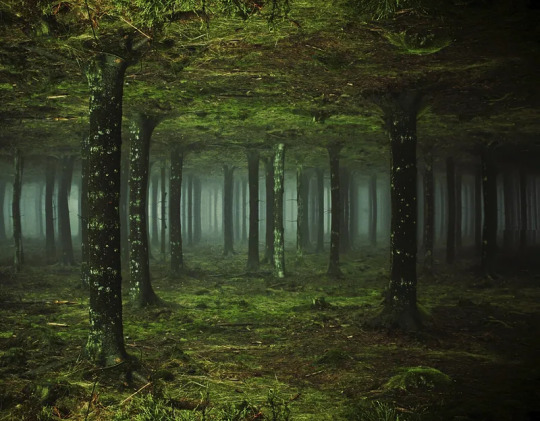
The anthropologist, Arnold van Gennep first wrote about the concept of liminality when he developed the idea of rites of passage.
He defined:
a "rite of separation" (preliminary rite)
a "rite of transition" (liminary rite)
and a "rite of incorporation" (post-liminal rite)
This transition theory was formed to explain the pattern he observed when it comes to changes in people's lives.
In short, liminal spaces are transitional or transformative spaces. It's the uncertain transition between where you've been, and where you're going- whether it means physically, mentally or metaphorically.

As a result, these places are often associated with an abandoned or sad atmosphere. They are also usually tied to feelings of despair, confusion, and hopelessness- as well as wonder, awe, and curiosity. Often it is also tied to the idea of a disconnect from the concept of reality or a neglected aesthetic.

To be in a liminal space means to be on the precipice of something, but not quite there yet. Often, when we are in liminal spaces, we have a feeling as if we are on the verge of discovering something new.
This can, of course, take the form of a literal physical place, but it can also take the form of physiological or mental states. There are liminal spaces, but maybe also liminal people- liminal careers, liminal relationships, and liminal events.

A recent example of this can be found during our own lived experience of going through COVID. A worldwide pandemic that brought a halt to our usual routines and day-to-day functions.
(And because this was the case, I think it should come as no surprise that this was when the idea of liminal spaces became more popular online.)

Perhaps what these bizzare/surreal/spooky pictures of abandoned places, and empty rooms allows us to do is to come to terms with our own feelings of confusion or dread.
For some of us (or even a majority of us), maybe we are currently living in a liminal space.

Maybe things don't make sense for you right now, and that's okay.
Maybe things are weird, different, or unfamiliar- and the rules, guiding belief systems, or structures you inhabit have changed, and you've lost your own footing within all that.

But perhaps- if you allow it, these conditions are precisely what is necessary for you to come to a deeper understanding of yourself. Only through these experiences of uncertainty can we learn to tap into the permanently available recreative power we all carry within each of us.
Maybe we could also learn to see the beauty, awe, and mystique that comes with these pictures- and to appreciate them for what they are:
A way for us to just "be" and be okay with it.

#journal#text#monologue#philosophy#art#liminal#liminality#space#atmosphere#reflections#the backrooms#thoughts#creative writing#covid19#coronavirus#psychology#psychotherapy#individuation#shadow work#carl jung#in sterquilinis invenitur#Spotify
42 notes
·
View notes
Text
The Legacy of the 86


The concept behind the GR86 was originally derived from a 1980s Toyota Corolla, the AE86.
At the start of the 80s, rear-wheel drive (RWD) cars were beginning to go out of style as manufacturers could no longer ignore the cost-effective practicality of switching their drivetrains to front-wheel drive (FWD). The AE86 was introduced during this time as Toyota's final RWD version of the Corolla. When it debuted, it made an unimpressive 128 horsepower, and came out looking like any other boxy, boring old Corolla.

Over time however, the AE86 revealed itself to be an exceptional case. Weighing in at only 2,300 lbs and carrying a nearly equal front-to-end weight distribution, the AE86 became well-known for its unique blend of balance and light weight. Eventually it would become an iconic vehicle, making a name for itself due to its impressive power-to-weight ratio, as well as low cost and reliability.
The AE86, with its mix of highly valuable attributes, quickly became a motorsports favorite for many car enthusiasts. It would also become instrumental in popularizing a new motorsport young drivers would invent in Japan's mountain roads called "Drifting".

Fast forward to present day, its modern counterpart, the 86 (or "Hachi-Roku" as many enthusiasts now call it) share many of the same characteristics as the original AE86. Now further refined and streamlined to become an affordable, entry level sportscar, the 86 provides its users with an engaging and exciting driving experience- all while at the same time allowing new drivers to also learn how to "feel" the road, and further develop their driving mechanics.

Sure, it's no Porsche, BMW or any other higher-end sports/luxury car, but that was never the point. The 86, at its core, has always been an underdog and a car for the people. What's more, the performance that one gets for its price, is unbeatable- being in a class of its own.

Like it's grandfather, the advent of the latest 86 (now called the GR86) also seems to share a lot of similarities with the introduction of the AE86.
The debut of both vehicles, during their time and place in history, seems to cast a large shadow over the entire automotive industry, as each car, in context, looks to mark the final chapter of their own respective eras and be the last of their kind.

During a time when rear-wheel drive cars were slowly falling out of style due to more cost-effective production of front-wheel drive cars, and in an age when the future of manual transmission, combustion engine cars altogether seem uncertain, both the AE86 and the GR86 serves to be a reminder of perhaps where our automotive ideals should lie, in stark contrast to where they currently are.

Human beings in general are incredibly proficient in finding new ways to increase efficiency and productivity. With each passing year, we seem to find better ways to do more tasks with less work and less engagement. We find more ways to be practical and profitable that perhaps we have reached a point that we have optimized ourselves out of certain human experiences.
The 86 has always been out of step and unconventional- always felt a little bit out of its time. However, for many car enthusiasts, the 86 serves as a symbol: of a feeling and experience that the inevitable march of progress might never again be able to capture or return to. Not a bad legacy for a “boring old Corolla”.
undefined
youtube
#auto#vehicle#car#ae86#gr86#journal#fr#drift#jdm#trueno#levin#86#hachiroku#philosophy#reflection#musings#storytime#racing#mechanic#essay#text#Youtube
2 notes
·
View notes
Text
Lucifer in arts #2
Something less obscure this time - and oh it does deserve it's fame! "Fallen Angel" by Alexandre Cabanel. And it's beautiful, but so terribly sad. So be ready for lots of emotions and some queerness at the end.
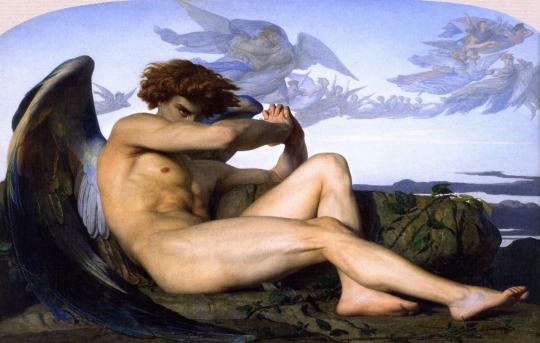
Is it Lucifer? The title isn't specific, but I can absolutely see him here. And he's hurt. He's crying, and he's scared - just look how he's shielding himself, how curled up he is. Also, he's naked, considering all the other characters are fully clothed, is hard to read as just a thing painters often do. I think it shows how vulnerable he is. Because this Devil is vulnerable.
And above, other angels are falling as well. The fact that he's the only one we see on the ground so far may further suggest he's indeed Lucifer who is often said to be the first to fall.
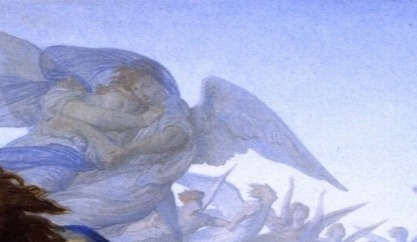
Most of them are not easy to read when it comes to emotion, but just look at the pair in the left! They're hugging. They're comforting eachother, and likely showing more love for eachother than their Father ever showed to them. Another pair holds hands. You rarely see fallen angels behaving like that in classical art. And then you see those bastards in the right:
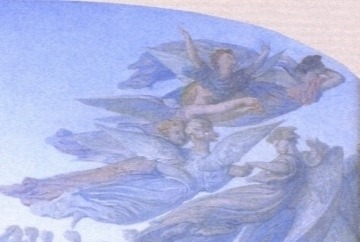
The unfallen angels, just flying away, seeming perfectly okay with the suffering of their siblings. They're unmoved, they're content. So fucked up.
This picture shows vulnerability rarely seen in demon depictions, and I love it. There's also one small detail I love: Lucifer's wings.

Usually you will see him with wings either black, white or bat-like. And here, they're colorful, in many colors. They're unique, they're his own. He is banished, but he can be his own person now. Meanwhile, all the unfallen angel wings are identical. I'm sure the falling angels will gain their own, different wings as well.
And while rainbow as queer symbol is younger than the painting, I cannot help but think of queerness here, and of the sad reality of queer folks often being rejected by their parents and families. But also of how we can support eachother, like the two hugging angels. And of how, against the all odds, we're still here, just the people we are.
Big thanks to my friend @welcome-to-the-end-times who helped me in figuring which angels are falling and which are not - I wasn't sure if I'm reading the background emotions well (I'm autistic). We ended up agreeing, but her help mattered to me a lot, and made me feel more confident in interpreting it.
35 notes
·
View notes
Photo

For the first time in his life, he stopped worrying about results, and as a consequence the terms “success” and “failure” had suddenly lost their meaning for him. The true purpose of art was not to create beautiful objects, he discovered. It was a method of understanding, a way of penetrating the world and finding one’s place in it, and whatever aesthetic qualities an individual canvas might have were almost an incidental by-product of the effort to engage oneself in this struggle, to enter into the thick of things. Paul Auster
木星探査船のホムンクルス Homunculus of Jupiter Exploration by Masaaki Sasamoto
610 notes
·
View notes
Text
“Community is a beautiful thing,” Demian said. “But what we see flourishing everywhere around us is no such thing. True community will arise again when actual individuals come to know each other; then will come a time when it reshapes the world. The communities we have now are just herds. People run as fast as they can to each other because they’re afraid of each other—the rich come together over here, the workers over there, the educated elites somewhere else! And why are they afraid? Fear always comes from a split in yourself. They are afraid because they have never gotten to know who they really are. A whole society of people afraid of the unknown in their own hearts! They all can feel that the principles they live by are not valid anymore, that they’re following the old laws; none of it, neither their religion nor their morality, is right for us today. For a hundred years and more, Europe has done nothing but go to school and build factories! They know exactly how many ounces of powder it takes to kill someone, but don’t know how to pray to God. They don’t even know how to be happy for an hour at a time. Just look at these student bars! Or anywhere rich people go to amuse themselves! It’s hopeless!
“My dear Sinclair, nothing good can come of all this. These people huddling together so timidly are full of fear and full of wickedness; no one trusts the next. They cling to ideals that no longer exist, and throw stones at anyone who is trying to create a new one. I can feel the conflicts. They will come, believe me, and soon! And naturally they won’t make the world ‘better.’ Whether the workers kill their capitalists or Russia and Germany blow each other to bits, the only thing that’ll change is who owns whom. But still it won’t have been in vain. These conflicts will clarify how worthless the current ideals have become; they will wipe out all our old stone age gods. The world as it is wants to die, it cries out to be destroyed—and it will be.”
Demian - Hermann Hesse
13 notes
·
View notes
Text
"The things we see are the same things that are within us. There is no reality except the one contained within us. That is why so many people live such an unreal life. They take the images outside them for reality and never allow the world within to assert itself."
Hermann Hesse. Demian
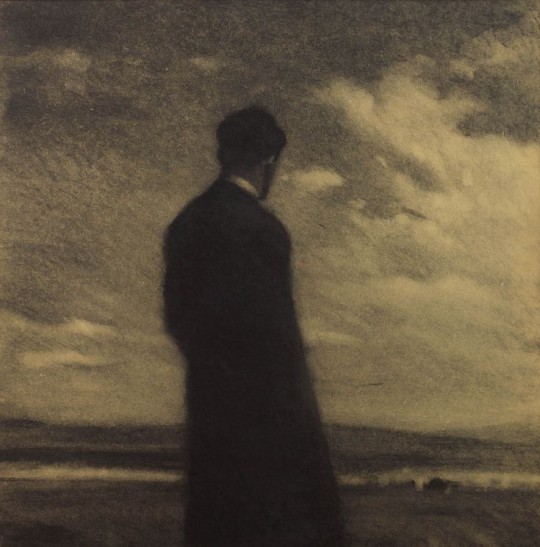
13 notes
·
View notes
Text
“I cannot call myself a scholar. I have always been and still am a seeker but I no longer do my seeking among the stars or in books. I am beginning to hear the lessons which whisper in my blood. Mine is not a pleasant story, it does not possess the gentle harmony of invented tales; like the lives of all men who have given up trying to deceive themselves, it is a mixture of nonsense and chaos, madness and dreams.”
— Hermann Hesse, Demian
498 notes
·
View notes
Text

"Everyone goes through this crisis. For the average person this is the point when the demands of his own life come into the sharpest conflict with his environment, when the way forward has to be sought with the bitterest means at his command. Many people experience the dying and rebirth - which is our fate - only this once during their entire life. Their childhood becomes hollow and gradually collapses, everything they love abandons them and they suddenly feel surrounded by the loneliness and mortal cold of the universe. Very many are caught forever in this impasse, and for the rest of their lives cling painfully to an irrevocable past, the dream of the lost paradise - which is the worst and most ruthless of dreams."
"Once he stood again on the high cliff at night by the sea and gazed at the planet and burned with love for it. And at the height of his longing he leaped into the emptiness toward the planet, but at the instant of leaping “it’s impossible” flashed once more through his mind. There he lay on the shore, shattered. He has not understood how to love. If at the instant of leaping he had had the strength of faith in the fulfillment of his love he would have soared into the heights and been united with the star."
― Hermann Hesse, Demian: Die Geschichte von Emil Sinclair's Jugend
10/08/2020
These were the excerpts, which touched me so deep...
I thought a lot about these sentences and sometimes am still thinking about them, because whenever I feel like Emil I remember his story.
Yeah, sometimes I too think "this is impossible". Whenever I fear or I'm insecure about something, a decision, an act, a choice, a responsibility, a speech, even a small talk, everything goes wrong, I fail or I end up with problems. And again, I feel like I'm standing on a high cliff...
Don't we all feel like Emil from time to time?! Maybe we can all learn something from Emil Sinclair's story, especially from these two paragraphs.
Have faith in yourself my dear, no matter for what you need it for...!
45 notes
·
View notes
Text
Book Club: Demian by Hermann Hesse

Rate: 4/5
Time: Can be read in less than a day
Length: Smidge over 100 pages (short)
Demian is a coming of age novel of the protagonist and narrator Emil Sinclair. The reader is pulled into Sinclair's psychological labyrinth as it grows desire, fear, confusion, and frustrations with the world and his own being. The underlying themes of the book bringing up age-old discussion and interpretations that reads differently towards every reader. I'd like to say that the first half reads as an autobiography of an ordinary person. The last bit of the novel does venture deep into Carl Jung’s' theory of the collective unconscious, embedding archetypes and symbolisms that would make Jung proud.
I planned to take my time, reading only two chapters a sitting. However, it became impossible to want to put it down. Didn't love Sinclair nor felt particularly any hate for him, I was curious to see where Sinclair ended up; Hesse has a way of introducing a character and wrapping you into them, as opposed to their world or relationships. I will say that I had to double-take when trying to figure out the Emil/Demian/Eva scenes.
Would you need to know psychology to enjoy the book? Nope, it’s a good story for readers that love classics and take pride in discussion (either alone or with a book club!)
Would it help to know a little psychology? Yes and it’ll take you on a margin scribbling joyride.
Final sayings? Totally PG, should be in the school curriculum, and the egg/bird quote is phenomenal
If you've already read it or don't care for spoilers keep reading below.
Concept Spoilers:
TWO WORLDS: At first glance this concept seems to reflect heavily on religious upbringing that a vast majority of individuals experience. The notion of growing up with preconceived ideologies attach Sinclair to dogmatic judgements of everything from the world, his peers, and even towards himself. While this concept and system of rights and wrongs does hold some foundation, it doesn’t encompass the complexity of the real world. The black and white perspective gets ultimately defeated and rendered useless when the argument of what is forbidden and permitted come up. The individual is in control of the rights and wrongs through their own boundaries, the external enforcement (be it laws or religion) deters back the Lawrence Kohlberg’s first level of cognitive development.
DEMIAN: Theres an interesting push and pull throughout the novel, as Demian, this enigmatic characters is a key figure in the development of Sinclair, allows Sinclair to do as he pleases only acting and speaking in pivotal scenes. Arriving with a district interpretation of the biblical Cain and Abel, he embodies the conflict and the temptation of breaking out of the two worlds view. He lets Emil retreat into his safe heaven after rescuing him from Franz’ tormenting, withdrawing his thoughts when going too far, and not interfering when seeing him at his lowest point. Guidance is the main word that comes up when thinking of Demian and he plays the role flawlessly.
ABRAXAS: I think the presence of the bird/egg painting and Abraxas is the major turning point in the novel where Emil goes from going through life to seeking a purpose and venturing into and outside of himself. Can write a 10 page essay on just how much I love the quote. The processes of Emil being introduced to his passion and his life goal and desires depends desperately on him breaking free from his past self and world. To be reborn into something new there must be the destruction of the old self/way. Abraxas also has strong attachment towards mysticism, mystery, and exclusivity of acquired knowledge - it is something that is not found by accident, but by intention.
PSYCHOLOGY: The concepts are there and this book provides great points of psychological discussion involving Freuds’ Oedipus complex and the majority of archetypes and symbols in Jung’s Collective unconscious. This shifts a lot of the relationships between the characters to be treated more like symbolic events/theories and personas. It’s would be simple to say Emil love Eva, but it wouldn’t do the novel justice by dismissing many other references that fit into this; such as the great mother, the dual mothers, and the animus-anima. Pick your poison, explore, and discuss.
Noteworthy Quotes:
When poets write novels they are apt to behave as if they were gods, with the power to look beyond and comprehend any human story and serve it up as if the almighty himself, omnipresent, were relating it in all its naked truth. (Prologue, Demian)
When I pictured the devil to myself, I found no difficulty in visualizing him in the streets below, disguised or undisguised, or at the fair or at the taverns but never at home. (Chapter 1, Demian)
He too was a ‘temper’ and moreover my link with the second, evil world with which I never wanted anything more to do. (Chapter 2, Demian)
Therefore each one of us must discover for himself what is permitted and what is forbidden as far as he himself is concerned. It is possible never to do a forbidden thing yet be the real villain. (Chapter 3, Demian)
It was the patten of my life and death; It expressed the tone and rhythm of my fate. (Chapter 4, Demian)
The bird os struggling out of the egg. The egg is the world. Whoever wants to be born must first destroy a world. The bird id flying to god. The name of the god is called Abraxas. (Chapter 5, Demian)
When we hate someone we are hating something that is within ourselves, in his image. We are never stirred up by something which does not already exist within us. (Chapter 6, Demian)
I have grown accustomed to my inner life, resigned to the fact that I had lost my feeling for the outside world and that the loss of its bright colors was an inseparable part of the loss of childhood and that one must to some extent pay for the freedom and maturity of the soul with the renunciation of those pure gleams of light. (Chapter 6, Demian)
12 notes
·
View notes
Text
The Endless Knot

The endless knot symbolizes the infinite cycle of samsara: of birth, death, and rebirth- as well as the interconnectedness of all things.
Life is cyclical in nature, and it will arrive in different phases. There will be times when it will bring us great joy, and there will also be times when it will bring us great hardship.
For me, the endless knot represents the manifestation of wisdom and compassion earned through the experience of navigating the twists and turns that come with life.
It is also a constant reminder of how our actions carry weight: as we pull on any of the knot's links, a reaction will take effect someplace else. It reminds us that the choices and decisions we make have consequences that echo out into the future.
The endless knot is a visual contemplation- a symbol that teaches us to live honestly and forth-rightly despite the constantly changing nature of existence. It empowers us to seek to live our highest truth and cherish each moment in life.
#samsara#buddhism#philosophy#hinduism#eastern#endless#knot#art#journal#monologue#thoughts#reflection#introspection#visual#text#tibetan#symbols#archetype#psychology#creative#musings
6 notes
·
View notes
Text
How to be Human
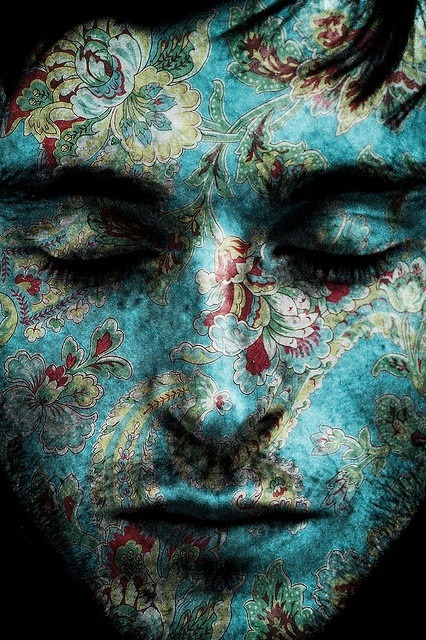
Let’s say you want to be a successful human being in the world. You need to make good choices based on your available resources.Thus you need these three basic qualities:
intelligence;
the will to act; and,
a calm steady disposition.
Intelligence is nature. Most of us have sufficient basic intelligence to thrive if you add diligence and a steady mind.
The will to act seems partly nature. Some people are naturally slothful. Others are naturally busy. Busy all the time. Others are like cats. Lazy, with but with occasional massive bursts of energy. Will can be trained.
Calm disposition. This is the most important of all. More important even than intelligence. When the firefight starts and the tracer bullets are whizzing the troops look to their calm NCO not their rattled West Point officer for leadership.
Calm in the face of CRISIS can be trained. In Buddhism this training is called samatha. It starts with observing the breath in meditation.
Please see → Samatha : Calm Abiding for more
67 notes
·
View notes
Text
Living and Believing
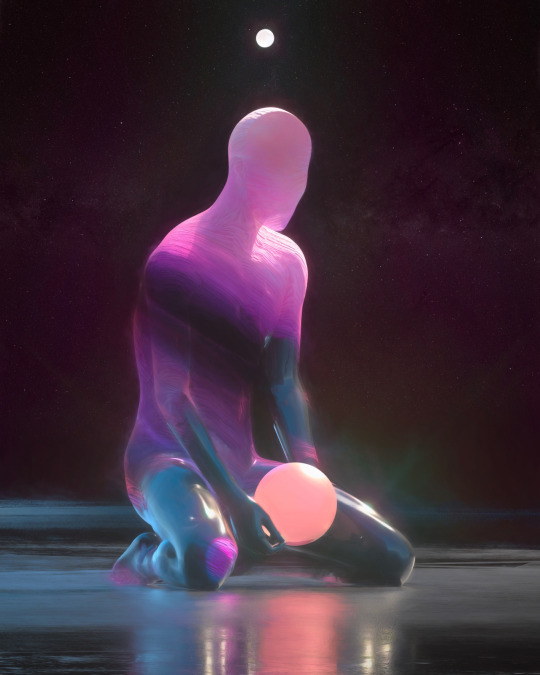
Over the years, I have found the idea of holding onto faith and belief to be more and more of a challenge the older I get.
Uncertainty, doubt, and confusion is something that I struggle with constantly.
Sometimes I can't help but feel overwhelmed by the sheer volume of information I am exposed to.
Day in, and day out, I find myself being fed opinions, thoughts, and ideas by other people and corporate/political entities on what I should value, what I should care about, or what is the ideal way I should live.
In the end, sometimes I find it difficult to be content or be at peace, because it seems like I am always being compelled to "keep up" with the enforced ideals of the times, or I might get left behind.
Worse still, often within the large sea of information available, for every opinion I find, an equally opposed point of view that serves to support another group's interests, also exists.
It can be hard not to feel jaded or disillusioned towards anything that may be true or genuine. Often, it seems like everyone is just continuously posturing; pointing out what is good and what is bad, or criticizing other people's way of life, as a means to draw the spotlight on them, and to showcase how "virtuous" they lead their lives by comparison.
And to me, this seems to be the problem.
Everyone seems to have an idea of how other people should live, yet very few actually have any idea or real certainty for how to live their own life. This era is defined by people who are constantly given an incentive and a platform to speak up about virtue to others. However, people also do it in order to garner likes, acknowledgement, and appreciation. It has become more convenient, and even rewarded, to do lip service on what is perceived as good and true, instead of actually taking on the difficult process of embodying these virtues and living them out.
A cognitive dissonance exists in today's culture, and sometimes it can be hard knowing who to trust, what to listen to, or what is the right thing to do, when everyone seems to be saying one thing, yet doing another- and this is where I struggle.
Every day, I can't help but second-guess everyone and everything- including myself. I am unsure of whether or not the values I hold close to me are things worth holding onto, or whether they are foolish and holding me back. Sometimes there are things that I want to believe in, but I also don't want to be tricked, exploited, or be misled any further than I need to be if they aren't true.
If there's one thing I really desire, I guess what I want is for my wager on the things I value to work out- and I know that making mistakes is part of the process, but I am also afraid of living my life being constantly made to look like a fool.
At what point do the virtues I believe in, and struggle to live out, turn me wise and help me to better understand?
If life is uncertain, and being confused is something out of my control, then what I at least wish for is that the things I end up putting my faith in, work out when I really need them to.
Deep down, I just want to know that I'm on the right side of my faith, and that what I believe in is true, and not misplaced.
#belief#faith#spirituality#reflection#monologue#introspection#journal#philosophy#art#creative#musings#text#love#life#journey#writing#psychology#existential#personal
4 notes
·
View notes
Text
Philemon

Who is Philemon?
Philemon is a figure who appears in two literary works:
Ovid's "Metamorphoses", and Goethe's "Faust".
In "Metamorphoses", Ovid narrates how Jupiter and Mercury wandered around, disguised as mortals in the hill country of Phyrgia.

Searching for a place to rest, they were turned away from a thousand homes until they were met by an elderly couple- Philemon and Baucis, who graciously invited these strangers into their humble cottage.
Philemon and Baucis had married in their youth in their cottage and have grown old together in it, accepting their poverty. To honor their guests they offered to kill their only goose. The goose took refuge with the gods who decreed that it should not be killed, and revealed themselves to the couple, saying that those around them would be punished but they would be spared.

With the Gods, they climbed into safety atop a mountain, and upon reaching the top, they saw that the entire country was flooded. Only their cottage remained, now transformed into a temple made of columns of marble and a roof of gold.
To repay their kindness, the gods granted the old couple any wish, to which Philemon and Baucis' reply was in keeping with their deep humility and reverence.
They wished to become priests and serve in this new shrine to the gods and to die at the same time as a testimony of their enduring love. And so it happened, and when they died, the gods honored them further by tranforming them into trees so that they could continue to live side by side in this way as they had in their mortal lives.
Much later, Goethe uses the old couple as a literary allusion in his book, "Faust".

In Faust, Goethe has Faust build a city on land reclaimed from the sea. In order to do this, Faust tells Mephistopheles (The Devil) that he wants the old couple, Philemon and Baucis, who live there, to move.
To Faust's ultimate horror, Mephistopheles burns the old couple's cottage, with the two still alive inside.
In 1913, during a period of psychosis, Carl Jung recounts a dream in his book, "Memories, Dreams, Reflections" in which a figure named Philemon appears to him.
Jung saw a sea-blue sky covered by brown clods of earth that appeared to be breaking apart. Out of the blue, he saw an old man with kingfisher wings and the horns of a bull flying across the sky, carrying a bunch of keys.

After the dream, Jung painted the image, because he did not understand it. During this intense period, Jung was struck by the synchronicity of finding a dead kingfisher, a bird rarely seen around Zürich, in his garden by the lakeshore.
Thereafter, Philemon played an important role in Jung’s fantasies. To Jung, he represented superior insight and functioned like a guru to him.

Philemon explained how Jung treated thoughts as though they were generated by himself, while for Philemon "thoughts were like animals in the forest, or people in a room, or birds in the air."
Jung concluded that Philemon taught him "psychic objectivity, the reality of the psyche."
This helped Jung to understand that there is something in us which can say things that we do not know and do not intend.
Goethe's Faust also made a tremendous impression on Jung and held a life-long significance for him.

He felt personally implicated by the destruction of these humble and reverent figures and felt that it was his responsibility to atone for this crime and to prevent its repetition in the 20th century.
Healing this "Faustian split"- the breaking off of man's spiritual, intuitive, and psychological understanding for the western world's rapid emphasis on industrialization and hyper-rationality would become a central theme in Jung’s life work.

At his tower in Bollingen, Jung commemorated Philemon. Over the gate, he carved the inscription,
“Philemonis Sacrum – Fausti Poenitentia”
[Philemon’s Shrine – Faust’s Repentance].
In one of the rooms at Bollingen, he painted a huge mural of the winged Philemon, essentially reproducing the painting from the Red Book.
In a letter to Paul Schmitt in 1942, Jung wrote:
“I have taken over Faust as my heritage, and moreover as the advocate and avenger of Philemon and Baucis, who, unlike Faust the superman, are the hosts of the gods in a ruthless and godforsaken age.”
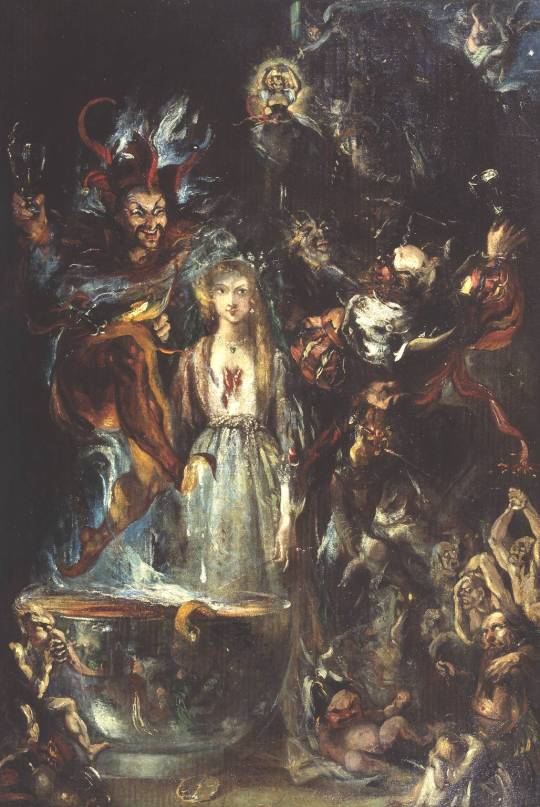
What does this all mean, and why is Philemon important?
To quote W.H. Auden:
"We are lived by powers we do not understand."
Often, rather than us having ideas, it is ideas that instead have us.
The "Faustian split" which Jung warns us about, and vigilantly fought against his whole life is the tendency for mankind's rationality to fall in love with itself and it's own creations.
When we end up prioritizing specific ideologies or systems of understanding over the dignity of the individual, we risk being inauthentic, and inevitably neglect or even deny what cannot be justified by our own ideologies.
This is analogous to what happens in any tyrannical society, any dogmatic religious system, or oppresive political party/point of view.
If you need any examples of this. You need only to look around, or turn to history and you will see it everywhere you go.
You will see it in racism, sexual orientation/class prejudice, gender inequality, the holocaust, and the gulag.
If we are not careful, there is an unconscious part within each and every person that is capable of commiting horrifying actions under the justification and rationalization of any ideology.
In this sense, Philemon acts as a counter-symbol: a spiritual totem that represents the individual's consciousness/psychological awareness behind rationality.
The symbol of Philemon suggests that there are things that cannot always be grasped by rationality and logic but can be peripherally known through other means using our own individual intuition and discernment.
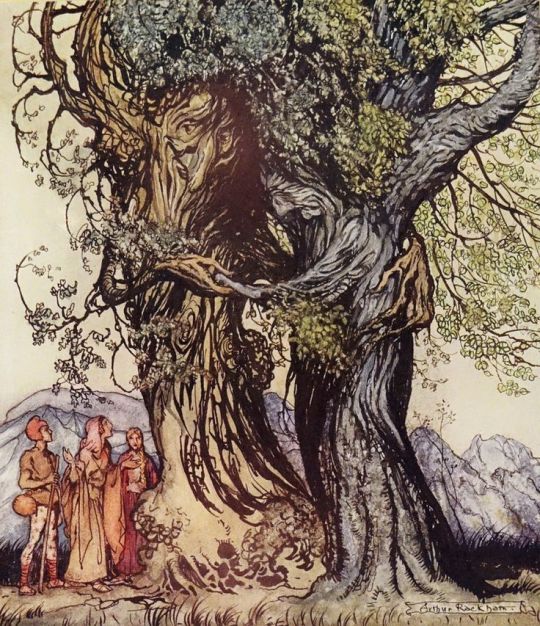
#psychology#jung#spirituality#carl jung#philosophy#philemon#alchemy#literature#story#transcendental#meditation#archetypes#myth#dream#reflection#journal#introspection#art#spirit#creative#text#written
27 notes
·
View notes
